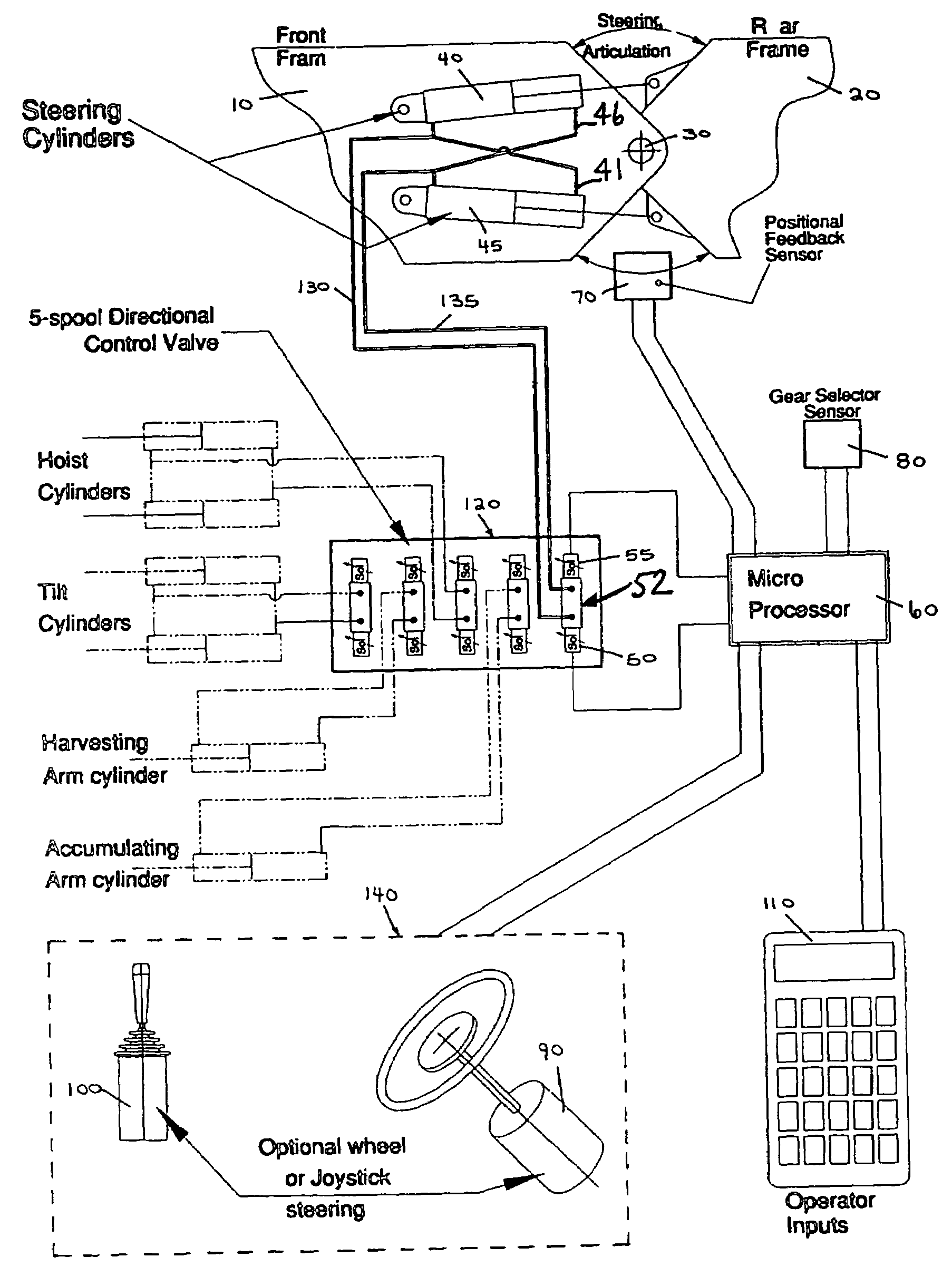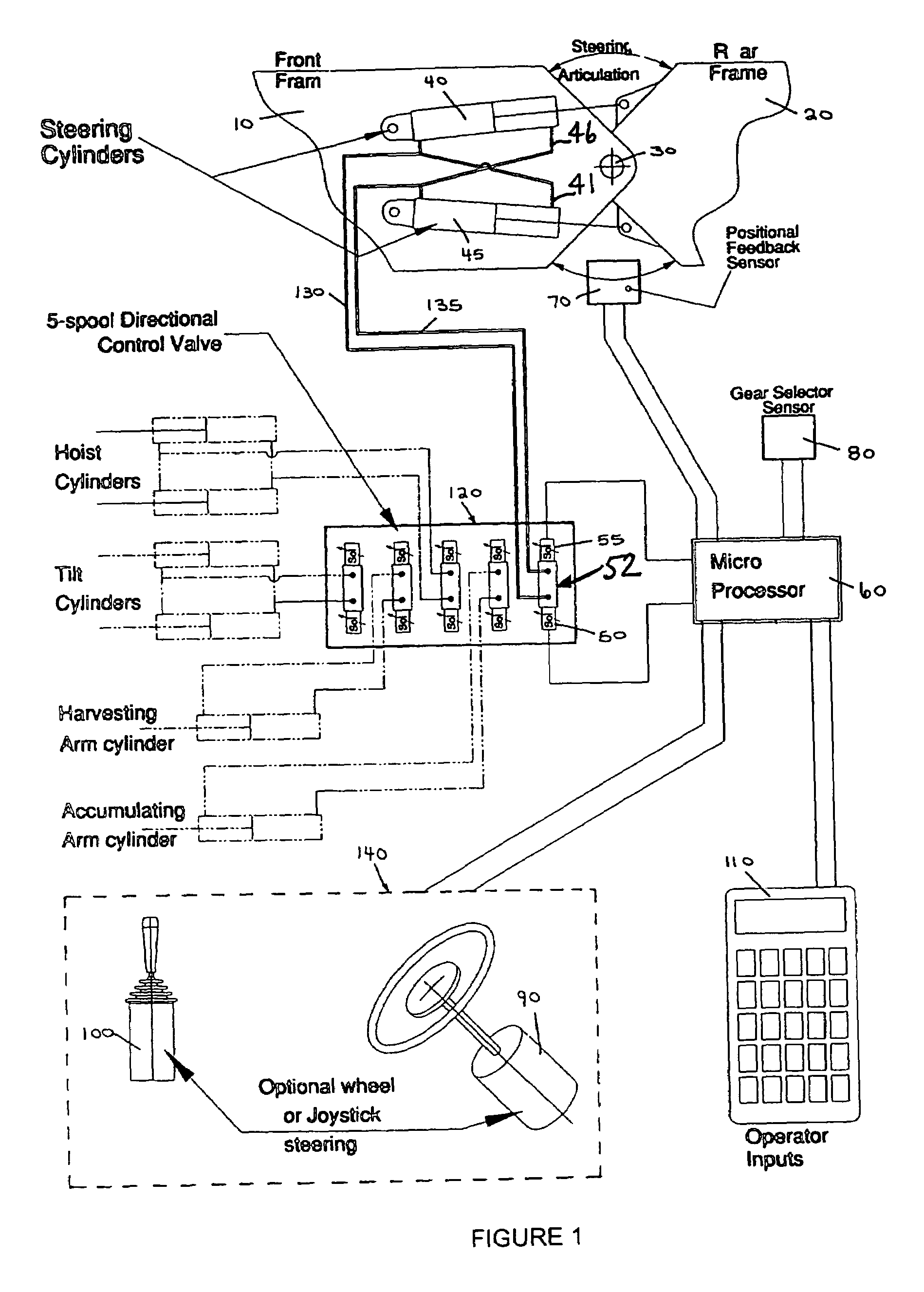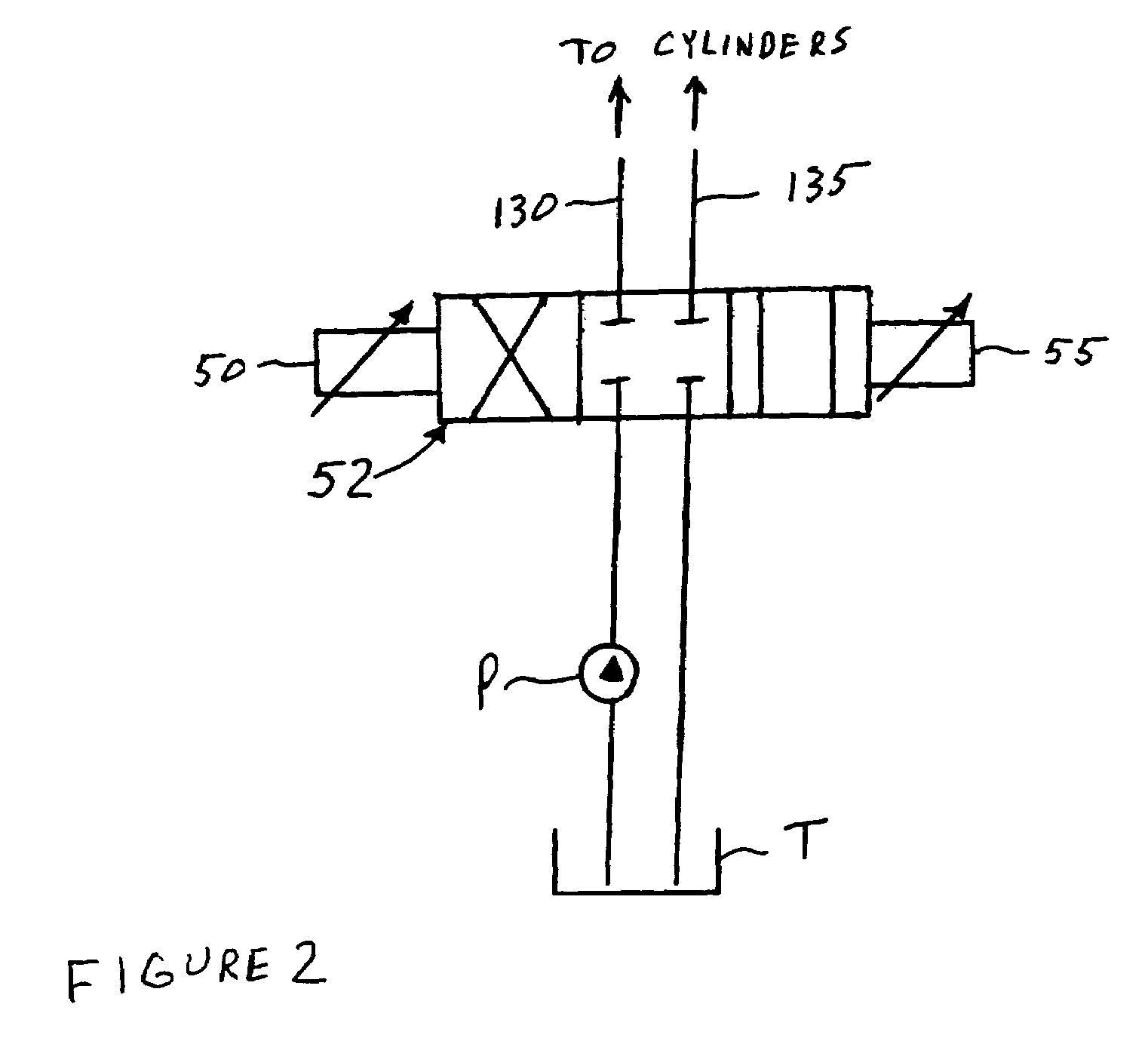Steering system for articulated vehicles
a steering system and articulated technology, applied in the field of articulated vehicles, can solve the problems of single steering sensitivity level, typical articulated vehicle need constant steering, and various inherent problems of typical articulated vehicles, and achieve the effects of safer and easier control, and better and smoother steering control
- Summary
- Abstract
- Description
- Claims
- Application Information
AI Technical Summary
Benefits of technology
Problems solved by technology
Method used
Image
Examples
Embodiment Construction
[0018]Referring to FIG. 1, an articulated vehicle according to the preferred embodiment of the present invention has a front frame 10 and a rear frame 20, which are pivotally connected at pivot joint 30. A pair of hydraulic cylinders 40, 45 are connected to the front frame 10 and the rear frame 20 and are located on opposite sides of the pivot joint 30 as shown. The hydraulic cylinders 40, 45 are used to steer the articulated vehicle by articulating the front frame 10 and the rear frame 20 around the pivot joint 30, thereby changing the articulation angle between the two. The front frame 10 and the rear frame 20 are articulated around the pivot joint 30 by having one of the hydraulic cylinders 40 extend while the other hydraulic cylinder 45 retracts.
[0019]Each of the hydraulic cylinders 40, 45 has its bore side connected to the rod side of the other cylinder 40, 45 by a conduit 41 or 46, and the conduits 41, 46 are respectively connected by hydraulic conduits 130, 135 to a four way,...
PUM
 Login to View More
Login to View More Abstract
Description
Claims
Application Information
 Login to View More
Login to View More - R&D
- Intellectual Property
- Life Sciences
- Materials
- Tech Scout
- Unparalleled Data Quality
- Higher Quality Content
- 60% Fewer Hallucinations
Browse by: Latest US Patents, China's latest patents, Technical Efficacy Thesaurus, Application Domain, Technology Topic, Popular Technical Reports.
© 2025 PatSnap. All rights reserved.Legal|Privacy policy|Modern Slavery Act Transparency Statement|Sitemap|About US| Contact US: help@patsnap.com



